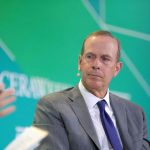The number of layoffs in the U.S. was supposed to shoot higher as the Federal Reserve jacked up interest rates to tame inflation and pushed the economy toward recession.
It hasn’t happened.
Instead, the number of layoffs, as reflected through weekly jobless claims, has fallen to an eight-month low, putting it back near a pandemic-era bottom. And the economy has continued to grow.
“It is very difficult to understand,” said chief economist Eugenio Aleman of Raymond James.
He’s not alone. Pretty much every economist on Wall Street
DJIA
is puzzled by the extremely low number of people applying for unemployment benefits each week.
Read: U.S. jobless claims fall to 8-month low of 201,000. Businesses avoid layoffs
Not that long ago, it appeared that jobless claims were on the rise. They increased from just under 200,000 in late January to as high as 265,000 in June amid a raft of widely reported layoffs by large companies.
Such an increase is typical of what happens shortly before a recession begins.
Yet since peaking in June, jobless claims have fallen steadily and are back to where they were at the start of the year.
What’s going on?
For starters, companies see no reason to lay off workers unless sales decline. Most businesses are seeing plenty of demand, because Americans are still spending lots of money.
While rising rates have hurt the sale of homes and other big-ticket items, consumers have spent more on services such as travel, recreation and dining out. These purchases are not really affected by higher borrowing costs.
The worst labor shortage since World War II also gives bosses little incentive to cut staff prematurely, especially since it is so hard to hire people in the first place.
“Businesses have been extremely reticent to let go of workers that they struggled to find over the last three years,” said U.S. economist Thomas Simons of Jefferies. “We doubt that they will be able to hold on to everyone indefinitely, but they’re going to try.”
The remarkable resilience of the labor market and broader U.S. economy has forced economists and the Fed to tear up their previous forecasts.
The Fed on Wednesday doubled its estimate of U.S. growth in 2023 to 2.1% from 1%. It also raised its forecast for 2024 to 1.5%.
Read: Fed predicts ‘soft landing’ for the economy — low inflation and no recession
That’s not all. The Fed predicted the unemployment rate would creep up to just 4.1% in the next two years. Previously the Fed had expected the jobless rate would climb to at least 4.5%.
The current unemployment rate is already extremely low at 3.8%, a level last seen in the 1960s. Almost every other time the Fed has raised rates, unemployment has topped 6% or much higher.
This time around, most economists predict the unemployment rate will remain unusually low even if there is a recession or prolonged period of stagnation.
“We expect some increase in layoffs later in the year as the economy slows, but look for job losses to be modest compared to prior recessions,” said Nancy Vanden Houten, lead U.S. economist at Oxford Economics.
A long-predicted recession, however, still appears far off. Many forecasters have even set aside their previous calls.
How did they get it so wrong?
Joshua Shapiro, chief economist at MFR Inc., contended that the pandemic has interrupted well-established economic relationships. The crisis ushered in unprecedented government spending and low interest rates — and those effects are still being felt.
“While it certainly is possible that the economy could turn on a dime, it is looking more and more as if strange pandemic-related patterns remain at work, and any normal relationships have at least been temporarily broken,” he said.
Even so, the strong labor market poses problems for the Fed. The cost of labor —- wages, benefits and salaries — is rising at more than double the prepandemic rate and could make it harder to get inflation under control.
If the strong labor market kept fueling the fires of inflation, the Fed could even be forced to raise interest rates further and thereby increase the odds of recession.
“The question remains: Can the Fed engineer a soft economic landing without some softening in the labor market?” said Mike Loewengart, head of model portfolio construction at Morgan Stanley’s Global Investment Office.
A soft landing refers to a successful effort by the Fed to tame inflation without a recession. The Fed has achieved such a feat just once in the past 75 years.
Aleman said it’s too early to declare victory.
“These numbers still point to a strong economy,” he said, “but it doesn’t mean there are no reasons to fear a recession.”
Read the full article here




